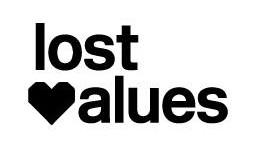
While it is easy to blame the mass production of inexpensive clothing throughout Asia for our growing pile of textile waste, as a culture we’re the ones enabling the system that causes it. The manufacturing of clothing used to be a local endeavor that would supply surrounding communities who often demanded high-quality products. But the lure of inexpensive, mass produced products has eroded our desire for quality in favor of quantity and the result is poorly constructed products that barely last after a few washes. And the textile industry has gone to great lengths to hide the fact that clothing simply used to last longer because it was well made.
Award winning designer and former MIT wearable tech researcher Elena Corchero recently spoke about modern textile manufacturing and its effects on us both culturally and economically at OMD’s UK Innovation Week. Of the several topics that she covered, she discussed how quality clothing and the skilled people who make them have become almost entirely devalued. Because no one pays attention to how clothing is made any longer no one sees the value in paying more for a higher-quality product that will last longer. But Corchero believes that modern technology like smart textiles and 3D printing are providing new opportunities to bring some of that meaning back into high-quality, handmade or customized clothing.
“In London, stores now have the ability to create clothing in-house, which provides full transparency so that you can see what’s happening. It makes it possible to customise products, and it’s not necessary to have piles of stock as the products are made there and then. You don’t even have to ship anything and there’s still a high production of wool in Scotland. It’s a win-win situation,” says Corchero.
“When you’re making a jumper, you used to need wool, tools, pins and knitting needles. With 3D printing, you just need the material for the 3D printer, which changes the picture a lot,” says Corchero.
Here is a video of Corchero discussing her projects and views on high-tech clothing design:
As the world becomes more and more automated, with almost 80% of factories set to have eliminated most human workers by 2020, we’re soon going to find ourselves buried in our own mass produced waste. Corchero, a huge advocate of wearable technology and fashion, sees the need for designers and manufacturers to create products that remove the stigma of wearables and focus on sustainability and quality. Advances in small-scale manufacturing that allow anyone to create clothing and technology is one way of making that happen, but she also sees design activists who can create products that have less impact on the planet and hold a greater sense of quality to the wearer as the key to eliminating our textiles waste.
You can learn more about Corchero and all of her high-tech fashion, accessories, jewelry and educational toys over on the Lost Values website. She also regularly updates her Instagram account, Facebook profile and Twitter with new products as they come available.